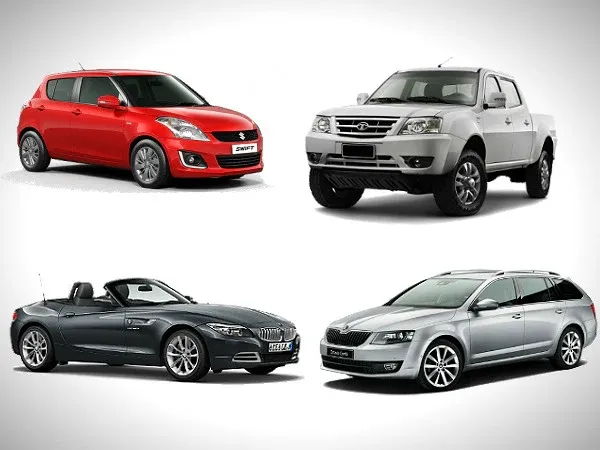Navigating the Spectrum: Understanding the Diversity of Cars to Suit Every Lifestyle...!!!
The automotive industry offers a diverse range of cars to meet various needs and preferences. From the practicality of hatchbacks to the ruggedness of SUVs and the eco-friendliness of electric cars, each type of car serves a specific purpose. Understanding the different types of cars and their uses can help individuals choose the right vehicle for their lifestyle and needs.

Cars, also known as automobiles, come in a wide variety of types, each designed to meet specific needs and preferences. From compact city cars to rugged SUVs, the automotive industry offers a diverse range of vehicles tailored for different purposes.
Sedans
-
Description: Sedans are the most common type of passenger cars, characterized by a three-box configuration with separate compartments for the engine, passengers, and cargo. They typically have four doors and a spacious trunk.
-
Uses: Sedans are ideal for daily commuting, family transportation, and long-distance travel. They offer a comfortable ride, good fuel efficiency, and ample cargo space. Examples include the Toyota Camry, Honda Accord, and BMW 3 Series.
Hatchbacks
-
Description: Hatchbacks are compact cars with a rear door that swings upward to access the cargo area. They combine the passenger and cargo space into a single compartment, often with foldable rear seats for additional storage flexibility.
-
Uses: Hatchbacks are popular for city driving and urban commuting due to their compact size and ease of parking. They are also suitable for small families and individuals who need versatile cargo space. Examples include the Volkswagen Golf, Ford Focus, and Hyundai i20.
SUVs (Sport Utility Vehicles)
-
Description: SUVs are larger vehicles designed for off-road capabilities and greater passenger and cargo space. They often come with higher ground clearance and four-wheel drive options.
-
Uses: SUVs are perfect for adventurous driving, family transportation, and carrying larger loads. They are suitable for off-road trips, road trips, and daily commuting. Examples include the Ford Explorer, Jeep Grand Cherokee, and Toyota Land Cruiser.
Crossovers
-
Description: Crossovers, also known as CUVs (Crossover Utility Vehicles), are built on a unibody car platform but have features of an SUV, such as higher ground clearance and rugged styling.
-
Uses: Crossovers are great for urban driving, family transportation, and light off-road adventures. They offer a blend of car-like comfort and SUV-like versatility. Examples include the Honda CR-V, Mazda CX-5, and Nissan Rogue.

Coupes
-
Description: Coupes are two-door cars with a sporty and stylish design. They often have a sloping roofline and a focus on performance and aesthetics.
-
Uses: Coupes are favored by driving enthusiasts for their sporty handling and dynamic appearance. They are suitable for individuals or couples who prioritize style and performance over practicality. Examples include the Ford Mustang, Audi TT, and BMW 4 Series.
Convertibles
-
Description: Convertibles have a retractable roof that can be opened or closed to enjoy open-air driving. They come in soft-top (fabric) or hard-top (metal) variants.
-
Uses: Convertibles are ideal for leisure driving, especially in favorable weather conditions. They are popular for scenic drives, weekend getaways, and city cruising. Examples include the Mazda MX-5 Miata, BMW Z4, and Ford Mustang Convertible.
Minivans
-
Description: Minivans, also known as MPVs (Multi-Purpose Vehicles), are designed for maximum passenger and cargo capacity. They have sliding rear doors and flexible seating arrangements.
-
Uses: Minivans are perfect for large families, carpooling, and transporting groups of people. They offer ample space, comfort, and convenience for long trips and daily errands. Examples include the Honda Odyssey, Toyota Sienna, and Chrysler Pacifica.
Pickup Trucks
-
Description: Pickup trucks have an open cargo bed at the rear and are designed for hauling goods and heavy loads. They come in various configurations, including single cab, extended cab, and crew cab.
-
Uses: Pickup trucks are widely used for commercial purposes, construction, farming, and outdoor activities. They are also popular among individuals who need a versatile and durable vehicle for both work and recreation. Examples include the Ford F-150, Chevrolet Silverado, and Toyota Hilux.
Electric Cars
-
Description: Electric cars are powered entirely by electric motors and batteries, producing zero emissions. They come in various body styles, including sedans, hatchbacks, and SUVs.
-
Uses: Electric cars are ideal for eco-conscious drivers and those looking to reduce their carbon footprint. They are suitable for daily commuting, city driving, and long-distance travel, depending on battery range. Examples include the Tesla Model S, Nissan Leaf, and Chevrolet Bolt.
Hybrid Cars
-
Description: Hybrid cars combine an internal combustion engine with an electric motor to improve fuel efficiency and reduce emissions. They can operate on electric power alone, gasoline, or a combination of both.
-
Uses: Hybrid cars are perfect for drivers who want better fuel economy and reduced environmental impact without relying solely on electric power. They are suitable for urban commuting and long-distance travel. Examples include the Toyota Prius, Honda Insight, and Ford Fusion Hybrid.
The automotive industry offers a diverse range of cars to meet various needs and preferences. From the practicality of hatchbacks to the ruggedness of SUVs and the eco-friendliness of electric cars, each type of car serves a specific purpose. Understanding the different types of cars and their uses can help individuals choose the right vehicle for their lifestyle and needs.
What's Your Reaction?

















